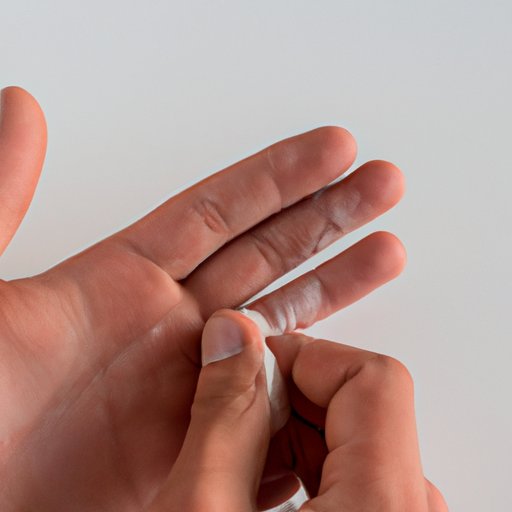
Introduction
Splinters are tiny pieces of wood, metal, or glass that get lodged in the skin, causing pain, irritation, and discomfort. While most splinters are superficial and can be removed easily, deep splinters can be more challenging to remove. In this article, we will provide tips and methods for removing a deep splinter.
Prepare Yourself and the Affected Area
Before attempting to remove a deep splinter, it is crucial to prepare yourself and the affected area to prevent infection or further injury. Start by washing your hands thoroughly with soap and water to reduce the risk of transferring bacteria or germs to the wound.
Next, gather the necessary tools: a pair of sterilized tweezers and either a sterilized needle or a pin. You can sterilize the tools by dipping them in rubbing alcohol or boiling them in water for a few minutes. If you have any, consider wearing gloves to minimize physical contact with the affected area and reduce the risk of contamination.
Methods for Removing a Deep Splinter
Here are five methods for removing a deep splinter:
Method 1: Tweezers
The most common and straightforward method is to use sterilized tweezers to grasp the end of the splinter and pull it out gently in the direction it has gotten embedded in your skin. Before using the tweezers, pinch the skin surrounding the splinter to give yourself a better grip. Then, grab the splinter as close to the skin’s surface as possible, and pull it out at an angle. Try to avoid breaking the splinter, as the remaining pieces can be harder to remove.
Benefits: Quick and effective, no special tools required.
Method 2: Needle
In some cases, you may need a more precise and controlled approach. Using a sterilized needle or pin, create a tiny hole close to the splinter’s entry point, making sure not to penetrate too deeply into the skin. Loosen the skin around the splinter, and then pull it out with sterilized tweezers. This method is more time-consuming but can be helpful if the splinter is difficult to grasp with tweezers alone.
Benefits: Precise and controlled, no need to apply too much pressure.
Method 3: Baking Soda Paste
If you prefer a more natural and gentle approach, you can try making a baking soda paste to draw the splinter out. Mix 1/4 teaspoon of baking soda with a couple of drops of water to form a paste and apply it over the affected area. Cover it with a bandage or plaster to keep the paste in place for several hours. Baking soda can help reduce inflammation and soften the skin around the splinter, making it easier to remove.
Benefits: Natural and gentle, may not require any tools or too much effort.
Method 4: Tape
If you do not have tweezers or are uncomfortable using needles, you can try using tape to remove the splinter. Cover the splinter with duct tape or cellophane tape, making sure not to overlap the edges. Wait for a few minutes, and then pull the tape off abruptly in the opposite direction of the splinter’s entry point. The tape can help lift the splinter out of the skin without penetrating it further.
Benefits: Can help lift the splinter more easily, no need to penetrate the skin.
Method 5: Alternative Methods
If none of the above methods work for you, you can try alternative approaches to soften the skin around the splinter. Some people suggest using white vinegar or essential oils to promote healing and soften the skin. Dip a clean cotton ball in the solution and place it on the affected area for a few minutes. This method may require less effort or be less painful, but it may take longer to remove the splinter entirely.
Benefits: May require less effort or be less painful, can promote healing.
Conclusion
Removing a deep splinter can be a painful and frustrating experience, but with the right tools and techniques, you can do it yourself. Remember to prepare yourself and the affected area, try different methods, and see which one works best for you. If the splinter is too deep or if it becomes infected, seek medical attention immediately and avoid exacerbating the problem.





